One of the best things you can do when making the switch to real food (after making these real food swaps) is to get out of the grocery store for every need and start finding local food sources or more farm-to-table food sources. Today, I’m going to share why it’s important to buy from local food sources, how to find local real food, and my favorite real food sources (the very places I buy real food from). I’ll share resources to help you find local food in your area (including vegetables, meat, dairy, eggs, and more), online shops for sourcing beans, and family-run mills for sourcing flour.
(If you’re new to real food, you may want to check out real food 101.)
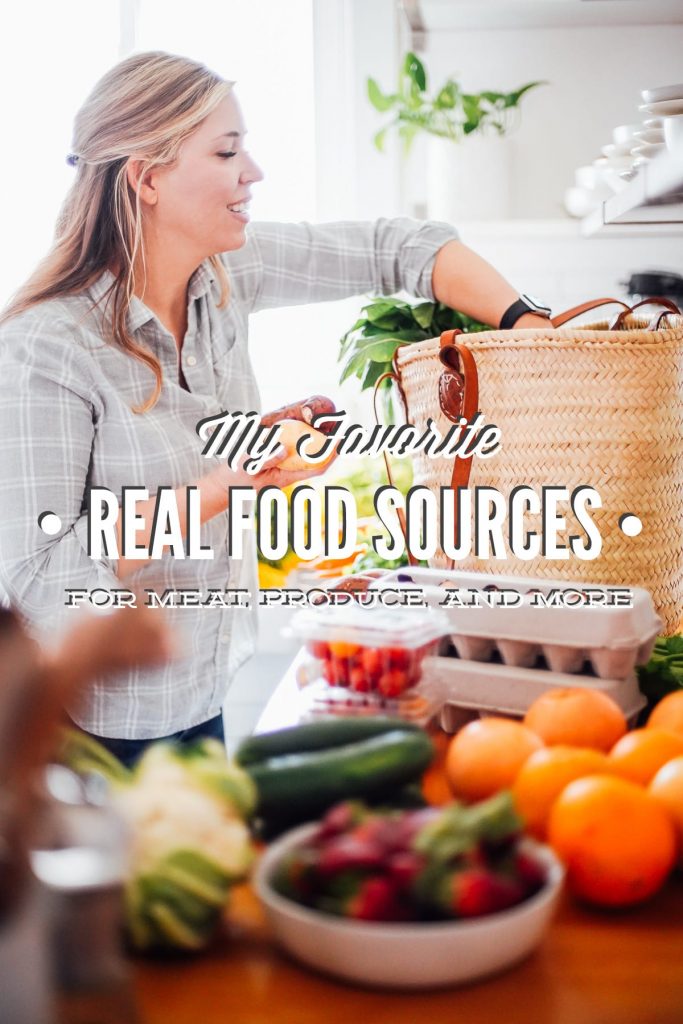
Want to Save This Article?
Enter your email & I’ll send it straight to your inbox. And you’ll get new recipes & tips each week.
The grocery store is a new way of shopping for food. The first grocery store was launched in 1916, but even then, most folks still had local food connections. People didn’t rely on the grocery store to meet their every food need. They relied on butchers, local produce farms, backyard gardens and hens, and bakeries. The grocery store was a new way to shop. It was a way to gather everything needed in one location. It was the ultimate convenience experience.
I’m not saying the introduction of the grocery store was a bad thing. I love a grocery store and shop at one regularly. But the dominance of the grocery store was a pivotal moment in the food culture of America. People traded personal face-to-face food connections for a one-stop shopping experience. A middle man now existed between people and food, which meant that people no longer got to experience the community aspect of food, have the knowledge of where their food comes from, or shake the hand that feeds them (as Michael Pollan suggests).
The grocery store was a pivotal moment in the food culture of America.
For the first time in history, there was a disconnect between people and their food.In 2020, grocery stores experienced consumer demand like never before. Pair that with meat packing plants shutting down, the distribution of food being disrupted, limits on grocery store items, and farms plowing fields full of crops because of hiccups in the big distribution supply chain line. All of this caused people to seek food outside of the grocery store, turning to local farms and butchers and mills.
Today, I'm going to share my favorite sources
for finding local and farm-to-table real food. By having these sources at your fingertips, my hope is that you'll be inspired to look beyond the grocery store for many of your family's needs, not just now but for many years to come. Local and farm-to-table eating is the most sustainable and healthy way to consume food.By tapping into these resources, you’ll literally shake the hand that feeds you (as Michael Pollan famously states). There is transparency in buying your food this way. You’ll get to know where your food comes from, the people that raise and grow your food, how the animals are treated, and how the vegetables are grown and harvested.
Not only will this food be nutrient-dense, but there’s also a sense of community that comes from shopping this way. There’s a sense of pride (in the very best way) in supporting the small farmer, the family owned mill or fishery, the hard-working baker, and the local butcher.
Below, you’ll find resources for finding everything from flour to meat to beans. The following resources aren’t some random finds that I’ve pulled together; instead, these are companies that I love and will happily put my dollars and voice behind. You can see my weekly grocery hauls using these very sources on my Instagram.
Where to Find Flour
Small, family-run mills are one of the best sources for sourcing flour, and yes they still exist today. My favorite flours to keep on hand, include: einkorn, spelt, all-purpose flour, whole wheat, bread flour, and cornmeal. Here are my favorite sources for buying flour without ever needing to step foot in the grocery store.
Sunrise Flour Mill: This is where I’m currently ordering my flour from. The flour is milled from organic, heritage grains, making it easier to digest for many people. For $8.99 (shipping price), I get freshly-milled heritage grains shipped directly from this family-owned Minnesota mill to my home in Florida. I order whole wheat flour, red heritage white flour, and bread flour.
Hayden Flour Mills: This mill is devoted to milling heritage and ancient grains. The family-owned mill is located on the farm where most of the grains are grown.
Central Milling: This mill offers a huge variety of flours, from traditional wheat to buckwheat and einkorn.
Jovial Foods: If you’ve been around Live Simply, you know that I love einkorn. If you’re new to this ancient grain, read more about einkorn here. Jovial Foods is my favorite way to source einkorn (and olive oil and canned tomatoes and crackers). I order a 10lb bag of einkorn flour direct from their website.
Where to Find Meat, Dairy, and Eggs
Sourcing meat, eggs, and dairy direct from a farm (or fishery, when it comes to fish) gives you 100% transparency into how your food is raised. It’s difficult to find the same transparency when shopping at the store (yes, even Whole Foods). Don’t get me wrong, I still buy chicken from Whole Foods and enjoy a burger from a restaurant. The goal isn’t perfection here. Instead, the goal is connect us to our food, to shorten the supply chain, and to shake the hand that feeds us. All of this leads to 100% transparency in our food system, which leads to healthier meals and families and sustainable animal practices.
By connecting to farms directly, you’re able to be an informed consumer and put your hard-earned money directly into a farmer’s pocket (versus big companies that control small farms and dictate their move and practices). For our family, I buy my meat and eggs from a local farm, source fish from a boat-to-doorstep share program (because fish is hard to find my area), and then source most of my dairy from the grocery store (supporting companies that are more transparent in their practices, like Vital Farms).
When looking for meat, dairy, and eggs, I recommend asking farms about their practices: How are the animals raised? What happens if/when an animal becomes sick? How big is the farm? What do the animals eat? Are the animals processed (killed) on site, at a butcher? How long have they been raising animals? Ask questions! Most farmers are very transparent and proud of their practices, just be patient if you reach out via phone or email and remember they are busy tending farm animals. Learn more about what to look for when buying meat and eggs here. And learn about what to look for when buying dairy here.
Local Farms for Meat, Dairy, and Eggs
Eatwild.com: This site features a database of local farms across the country that offer farm-to-consumer meat, dairy, and eggs. This isn’t an exhaustive list, so think of this website as just a starting place to explore the options in your area.
Health Food Stores: Yes, this post is about options beyond the grocery store, but small, locally-owned health food stores can be a great place to find local farm products. Nature’s Food Patch is a small health food store in our area that pulls from local bakeries, dairy farms, and ranches.
Google Search: Simply using the search bar to search your area and “local farms” or “local dairy farms” or “eggs for sale” or “grass-fed meat” can turn up good results. I googled my area, “Tampa Bay Local Farms” and found a number of options pop up.
Ask on Social Media: Ask your friends on Instagram, ask the parenting Facebook group you joined a few years ago, or just post a random social media blast, “Anyone know of farms in the area for meat, dairy, or eggs?” You might be surprised by the number of responses.
Farm to Door Delivery Services for Meat, Dairy, and Eggs
Online meat services have becomes quite popular lately, like Butcher Box. I’m personally not a fan of many of these options because they lack transparency in their sourcing. I reached out to Butcher Box last year and was told that they wouldn’t share their sourcing. <–I had asked for a list of the farms they pull from. For a company that claims to be delivering grass-fed and pasture-raised meats, I figured they would be proud to showcase their farms. Nope. That raises a serious red flag for me. What do they have to hide? That said, there are delivery services that offer complete transparency. I’ve highlighted these companies below.
Sitka Salmon Shares: This is a fisherman owned small company out of Sitka, Alaska. They are transparent about where the fish is caught, how it’s caught, and even the boats and fishermen who catch the fish that’s delivered to your door. I get the 5lb box, delivered monthly. The fish is always frozen (and I live in HOT Florida) and is the freshest fish I’ve had outside of visiting Alaska myself and eating freshly-caught salmon on the shores of the Aleutian Islands (a trip we took a few years ago). You can sign up for a 3-month share or a 7-month share. If you want to try Sitka Salmon Shares, I have a coupon code you can use for $25 off a premium share. Use code: LiveSimply
Crowd Cow: This is like Butcher Box, except they are 100% transparent about where their meat comes from. You’ll find a list of farms based on your delivery location on their website.
Moink: This is another direct-to-consumer option offering grass-fed and finished beef, pastured chicken and lamb, and wild-caught salmon. This company also discloses the farms they pull from on their website.
Primal Pastures: This California based farm offers different cuts and meat selections. They deliver nationwide.
Grassroots Farmer’s Cooperative: Another option with pastured chicken, pork, and grass-fed beef with transparency about farm sources. This company offers free shipping on orders over a certain dollar amount.
Five Mary’s Farm: This family-owned, California-based farm is highly regarded for their transparency and delicious meats. They ship direct to homes throughout the US.
Where to Find Fruits and Veggies
Farmer’s markets and local farms are the best way to source the most nutrient-rich, seasonal produce in your area. By supporting these farms, you’re directly supporting the local economy in your area and food diversity in our agriculture system.
Find a local farm to buy direct from or support farms at the farmer’s market. You don’t have to buy all your produce from these farms. Start small and gradually increase how much you source from these farms. It’s taken me years to learn how to shop and eat seasonally, sourcing mainly from local farms in our area during the growing season. Once the season ends, I end up back in the grocery store produce section and find myself longing for the just-picked tomatoes and kohlrabi and radishes and strawberries grown by local farms. The taste just doesn’t compare!
Here are the best sources for finding local options your area.
localharvest.org: Similar to eatwild.com, this website features a database of farms. This isn’t an exhaustive list, but a good place to search and find local farms in your area.
Modern Farmer CSA List: Modern Farmer is currently creating a nationwide list of CSA programs (farm to consumer programs). This is a great resource for finding local farms, but keep in mind this list is currently a work in progress, so if you don’t see anything for your area try the other options I’ve suggested.
Google Search: Simply using the search bar to search your area and “local farms” or “local vegetable farms” or “local produce farms” or “local farmer’s market” can turn up good results. I googled my area, “Tampa Bay Local Farms” and found a number of options pop up.
Ask on Social Media: Ask your friends on Instagram, ask the parenting Facebook group you joined a few years ago, or just post a random social media blast, “Anyone know of farms in the area for produce?” You might be surprised by the number of responses.
Where to Find Beans
Beans may seem like a strange item to include on this list, but during the coronavirus quarantine, dry beans have been hard to come by in the grocery store. Aside from this, it’s best to source fresh beans. Beans sitting on grocery store shelves can be quite old, which means they may not cook very well and leave you feeling frustrated with the results of your bean soup. If you are going to buy beans from the store, go for the bulk bins. The bins usually have a high turnover rate which means the beans are likely fresher than the ones sitting on the shelf.
I love to cook dry beans in the Instant Pot and use them to make soups, hummus, crispy chickpeas, or tacos.
Rancho Gordo: This company sells heirloom beans from farms in Mexico. The beans are always fresh and they offer a wide selection.
Palouse Brand: I purchase this brand off Amazon frequently. The chickpeas are amazing and affordable, along with the other bean selections.
Shopping Options for General Pantry Goods
There are quite a few options for purchasing pantry staples online or direct from local vendors. Here are a few resources to get you started with sourcing pantry items beyond the grocery store.
Vitacost: An online “health food store” that offers free shipping over $49. I’ve ordered from this website many times with a great experience each time. If you join their email list, they send out coupon deals regularly so you can save 10-20% off your entire order.
Thrive Market: This is an online health food store that requires a paid membership. I haven’t tried Thrive Market, but I know many people love this option.
Azure Standard: Azure Standard is like an online health food store, but instead of delivering goods to your door, you’ll need to pick up from a designated location in your area. I haven’t tried this program, but reader friends regularly recommend this shopping option.
Farmer’s Markets: The farmer’s market is a great resource for finding vendors who specialize in making fermented foods, kombucha, yogurt, granola, soap, bread, etc. Many markets offer online shopping at the moment (due to coronavirus), so you can begin checking out the options now versus having to wait for the market to reopen. Search “farmer’s market” and your area via the Google Search Bar.
How to Stock a Real Food Pantry and Fridge
Check out what I stock in my real food pantry in this post and how I store real food in my fridge in this post.
Do you have a favorite beyond-the-grocery store farm, online shop, butcher, or mill? Share your favorite resources below in the comments.

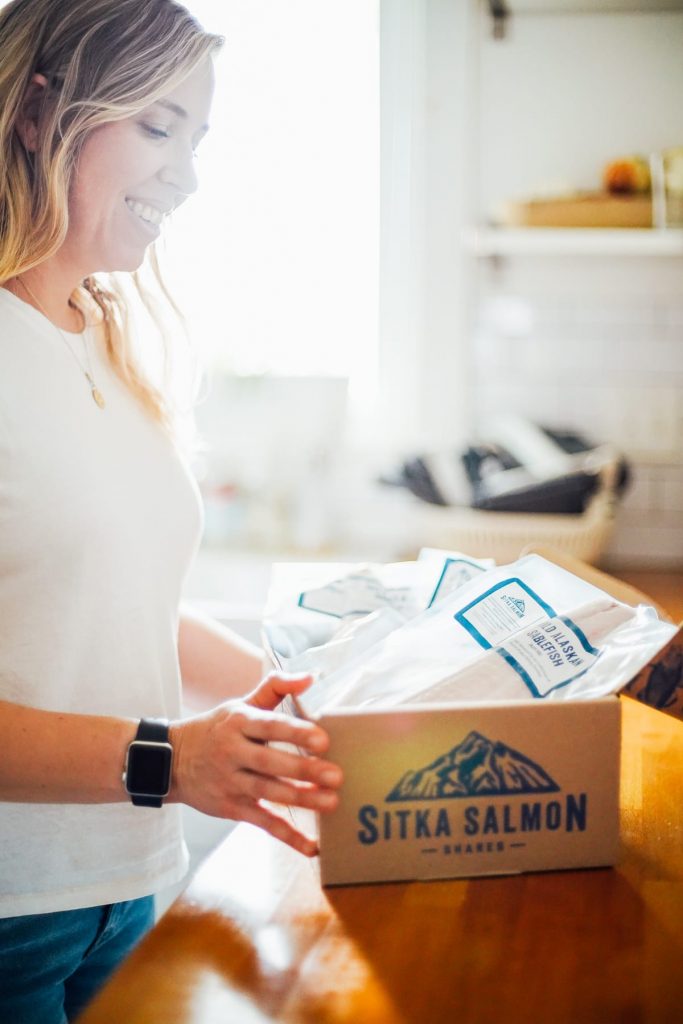
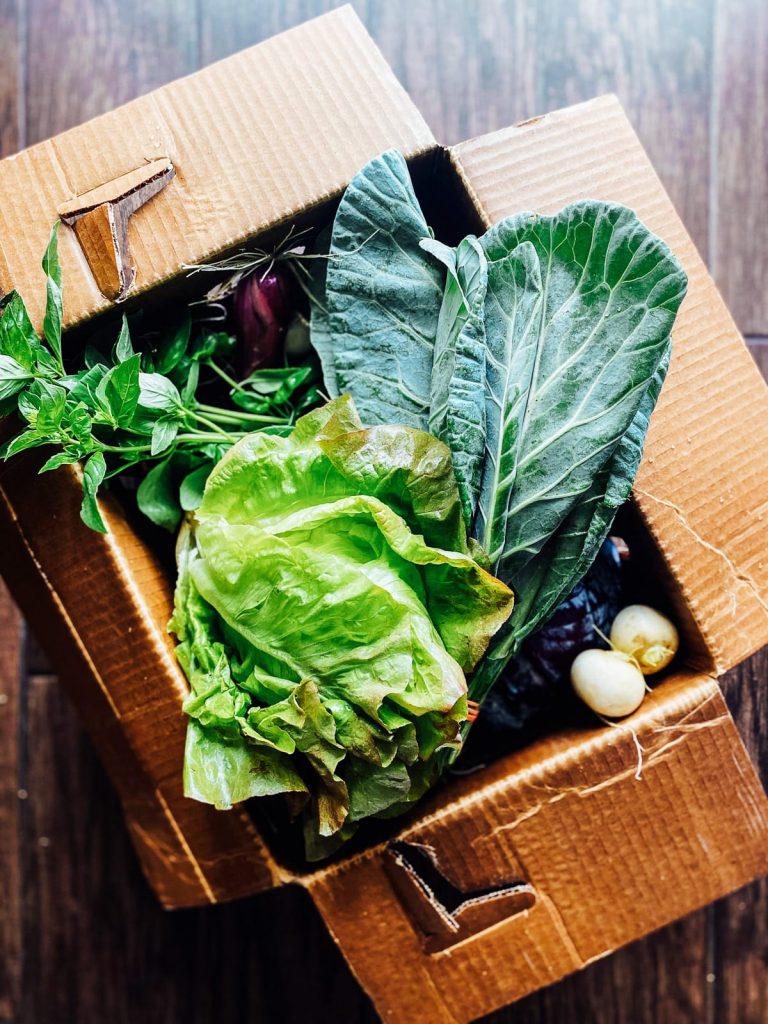
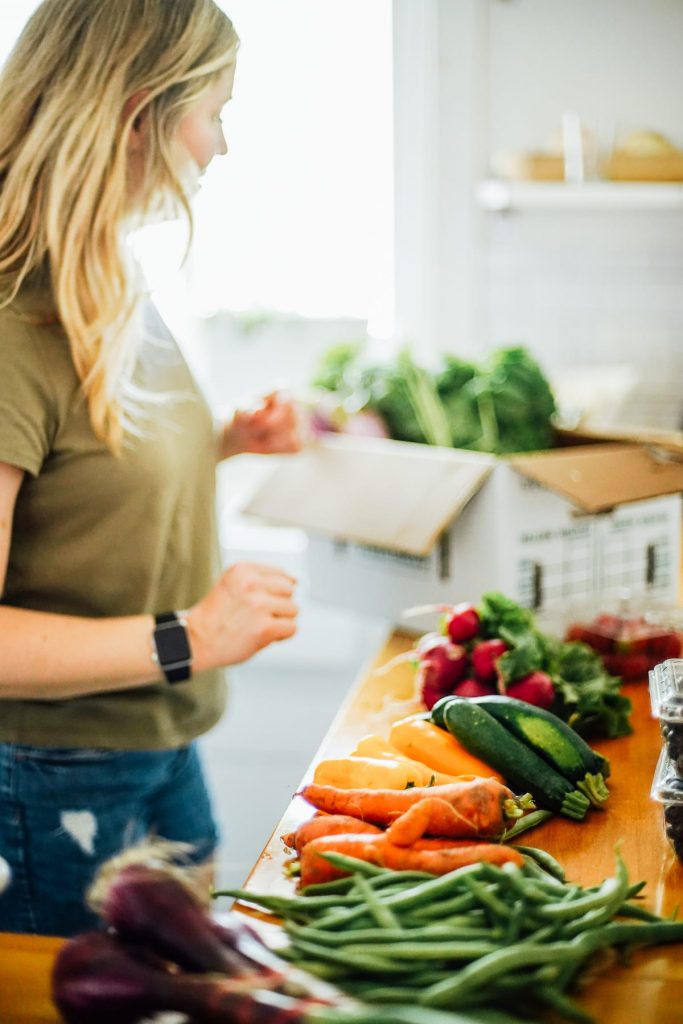


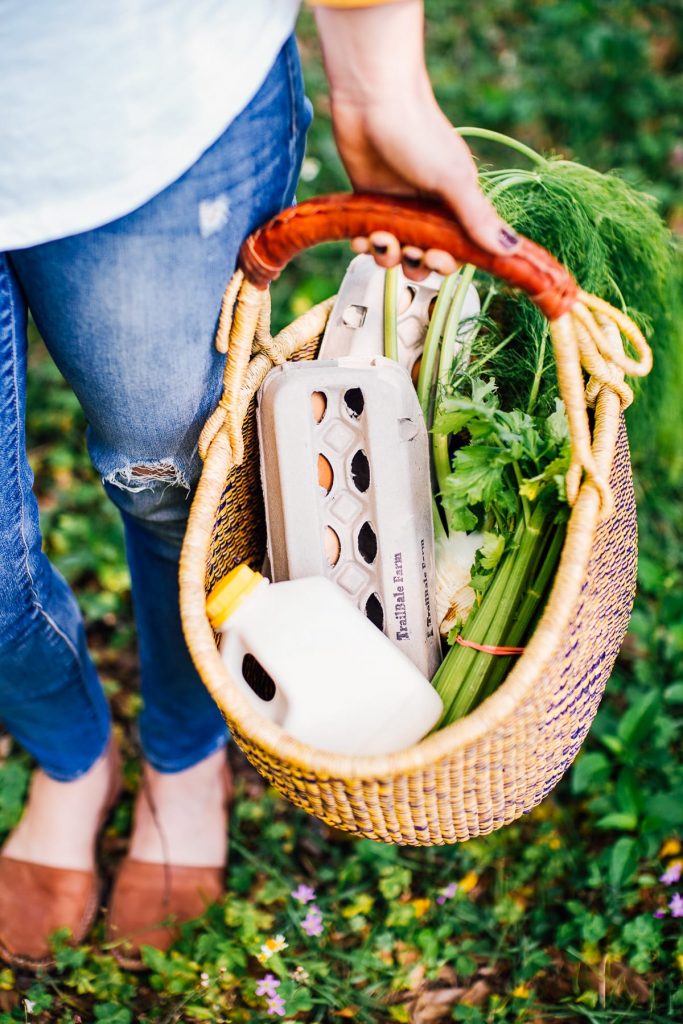
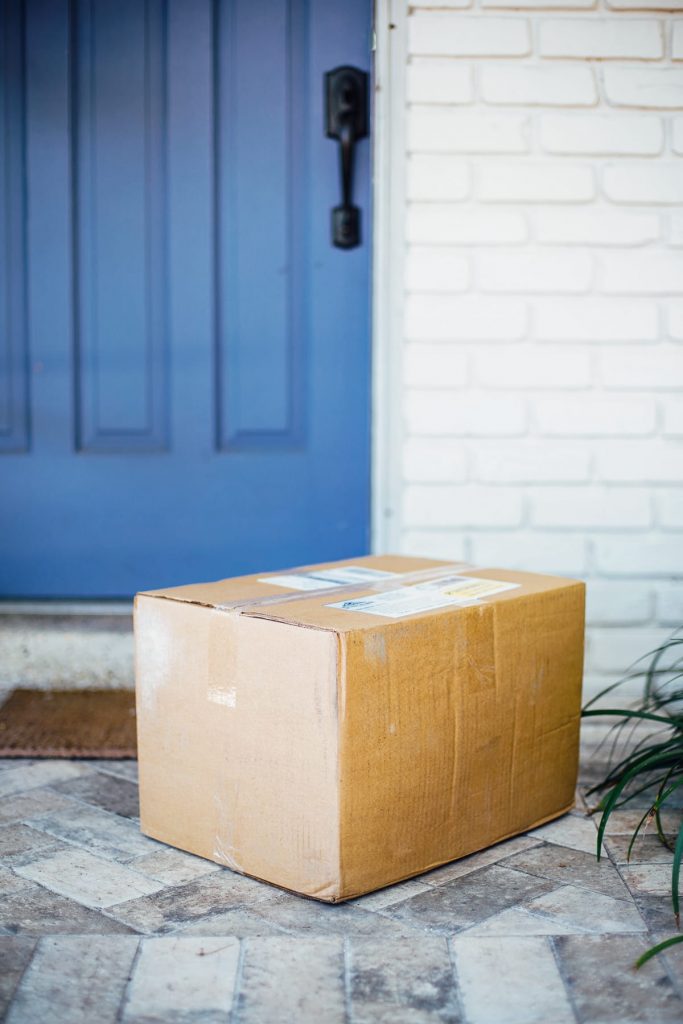

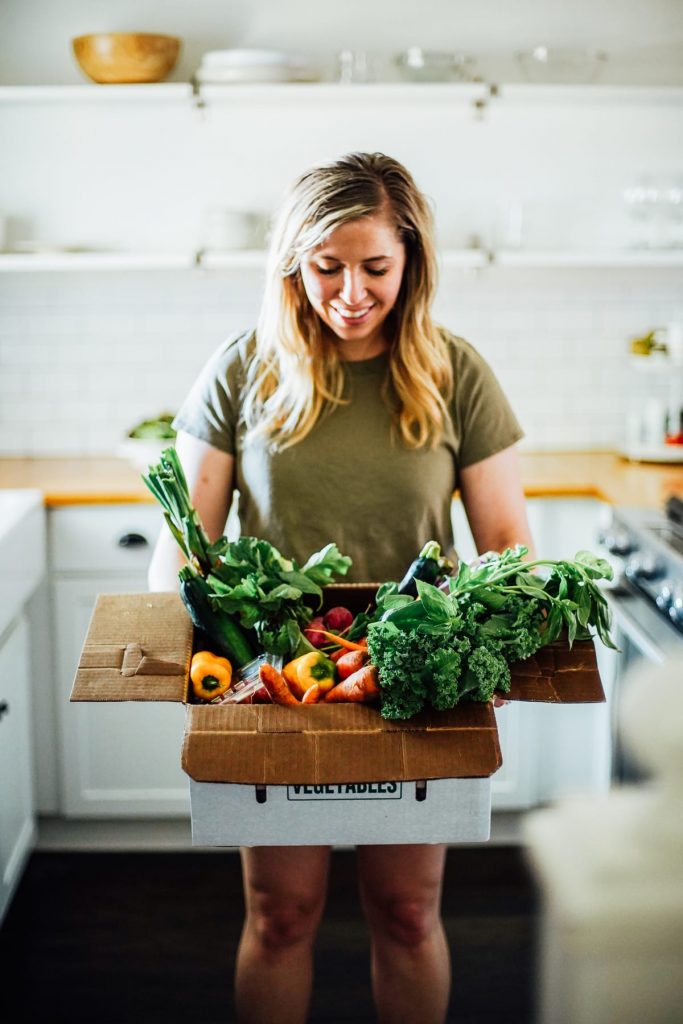
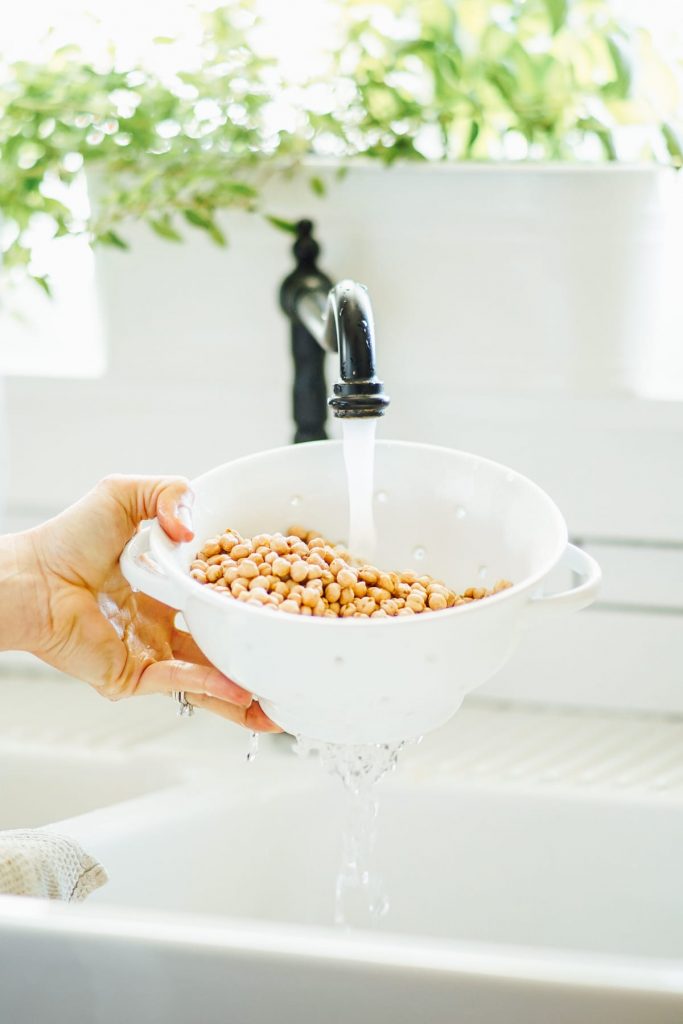

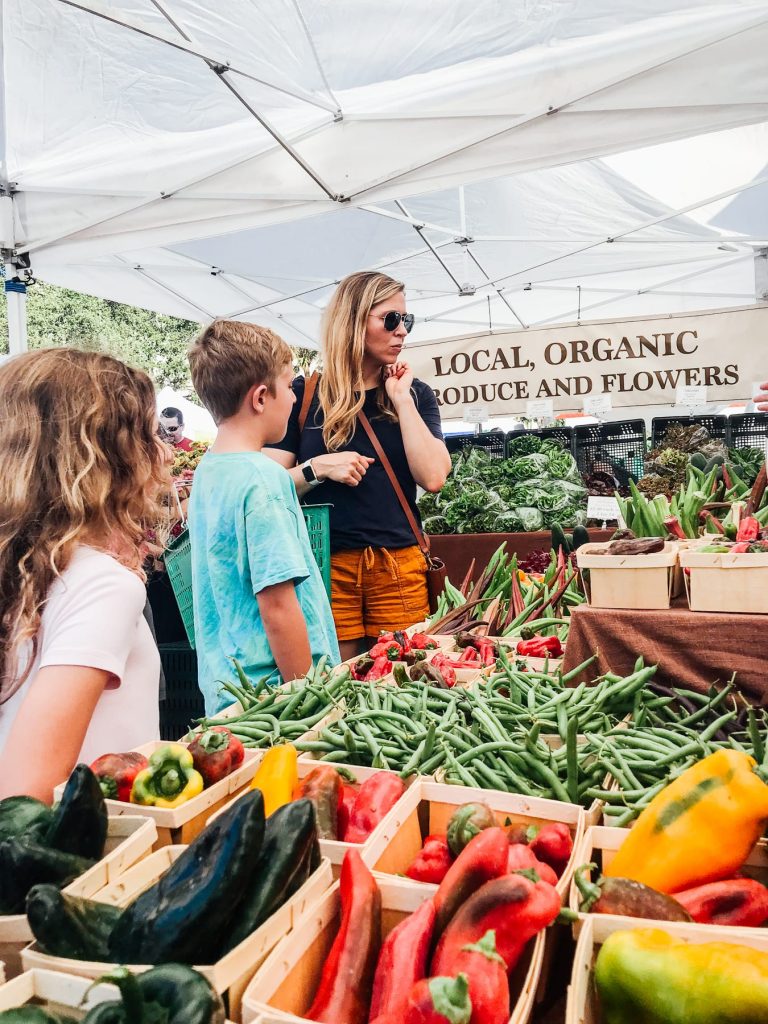
Do you have any tips on navigating Saturday Morning Market in St. Pete, FL?
The back row (near the parking lot) is all the local farms and bakers. That’s where I recommend focusing the most time and attention: Worden Farms, Little Pond Farm, Trailbale Farm for meat and eggs, Gulfcoast Sourdough. From there, the middle row also contains some local bakeries, but gets into more ready-made meals and such. And the first row I usually avoid as it’s more retail produce vendors and arts and crafts. Bring your own bags, a cart if you have one, and all take credit or debit cards these days.
I’m based in North Eastern PA and the service is https://deliveredfresh.localfoodmarketplace.com if you happen to have others looking in this area.
Great! Thank you!
LS Team
Thanks for sharing about the 10 lb Jovial bags from their website! I’ve been buying the tiny bags from the grocery store and this will be so much easier and probably more cost effective! I discovered a service localled that’s basically an “online farmer’s market.” Before everything started getting crazy I would place my order online from a huge selection of local meats, dairy, produce, etc. and pick it up at the distribution truck at a local park. Now they deliver it right to my house. People caught on right at the start when they didn’t want to deal with grocery stores and I got an email from the owner of the distribution truck and he said a farmer told him, “This is the best week I’ve had in 40 years! It’s like they finally found my farm.” It made me cry. I hope something good that comes out of this is people staying connected to their local farms and suppliers!
So glad the flour tip was helpful, Tierney. That is amazing about the farmer. The farms and similar services in our area have experienced the same increase of demand. People are beginning to realize their need for these connections–I agree, let’s hope this support continues. What a cool program, too!
Thanks for the post. I also use food coops. If you can’t join one locally you can organize your neighbors to meet order minimums.
Such a great tip, Cheryl! Thank you for sharing.
Thank you for this! Ihave been at a loss since I found out our farmer up the road sprays his veges with pesticide and fungicide. I live in Texas so organic farming is a challenge!
I hope you are able to find something!
LS Team
I order from grasslandbeef.com. They are located in Missouri. They have been a great company to order from and have a very wide selection. They have their own processing plant in Missouri.
That’s great, Lori! So happy you could find something that works for you.
LS Team
Great post with great info, thank you!
You’re welcome, Katie! Thank you, so glad it was helpful.